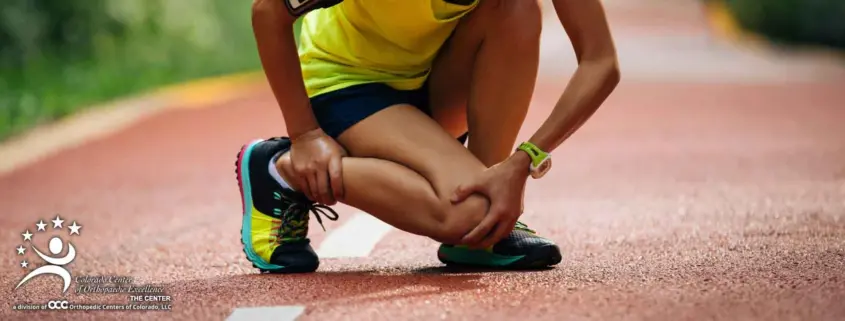Have Knee Pain? Common Causes, from Runner’s Knee to Iliotibial Band Syndrome
Are you noticing knee pain as you’re getting out and about this spring? As the weather warms up, youth soccer players are transitioning from turf to grass, adult recreational leagues are starting up in many sports, and even pick-up basketball games are becoming more common. With so many people getting more active than they’ve been in months, knee pain – old or new – may be getting in the way.
Let’s explore some of the common causes of knee pain along with tips for managing pain and when to see a doctor.
Runner’s Knee
The term “runner’s knee” is often used to describe a variety of dull or achy knee pain around the kneecap, but symptoms can also include swelling, instability, and tenderness. Its medical name is Patellofemoral Pain Syndrome, as the kneecap is medically called the patella.
Runner’s knee can occur from overuse but can also occur when the surrounding muscles are too tight or too weak, especially thigh muscles like quadriceps and hamstrings. In those cases, there are resistance training, strength exercises, and stretches that may be used to address the cause and prevent future pain.
Another common first step to address this type of knee pain is RICE: Rest, Ice, Compression, and Elevating the knee. Using NSAIDs like ibuprofen can also help reduce swelling and pain. However, if pain persists, you should see an orthopedic specialist. He or she will do a physical exam and may also order imaging of some kind such as an X-ray or MRI to rule out other injuries check for damage. An orthopedic specialist will also recommend a treatment and recovery plan that aligns with your condition, age, lifestyle, and other factors.
Patellar Bursitis
Another source of knee pain in the patella, or kneecap, is patellar bursitis, which involves inflammation of the bursa in the front of the kneecap. This happens when the bursa (a fluid-filled sac that sits in front of the kneecap) creates excess fluid after becoming irritated. The swelling in this area then puts pressure on other nearby parts of the knee.
Because the swelling is typically very apparent, sometimes even with a simple visual comparison to the other knee (if not also inflamed), an initial diagnosis can often take place during a physical exam. However, imaging tests are frequently run to rule out other joint damage or injuries.
Treatment is typically focused on addressing painful symptoms while the bursitis improves with rest. This can include physical therapy, a corticosteroid injection to reduce inflammation and relieve pain, and in some cases, surgery. Surgery is typically reserved for chronic bursitis or severe cases.
Iliotibial Band Syndrome (IT Band Syndrome)
Caused by overuse, injuries to the IT band cause pain on the outside of the knee, frequently noticed while running. Here too, rest, ice, and NSAIDs are often the first line of defense to minimize pain allow the knee to heal.
If those techniques do not resolve the pain, physical therapy is often the next step. Patients should not let pain linger on for an extensive amount of time without seeing an orthopedic specialist who can properly diagnose IT band syndrome and recommend the right course of therapy or other treatment. While surgery is less common, each patient is unique and those with chronic inflammation or other knee injuries may be surgery candidates.
Other Sources of Knee Pain
There are numerous causes of knee pain, from general inflammation to arthritis, to serious injuries like a meniscus, ACL tear, or MCL tear. If your day-to-day activities are limited by knee pain, it may be time to see an orthopedic specialist who can properly diagnose and treat your knee pain. Schedule with one of our knee specialists to learn more.

